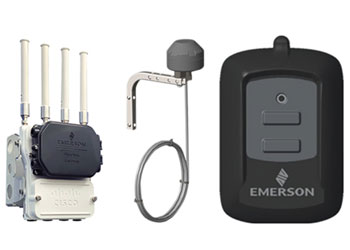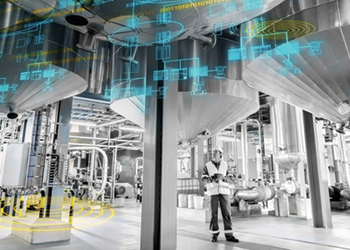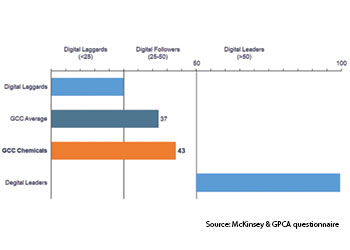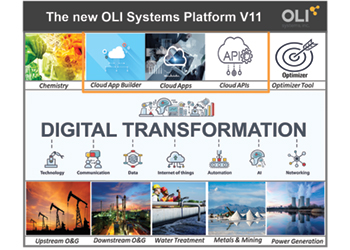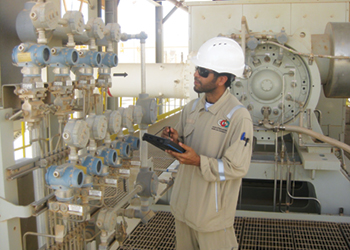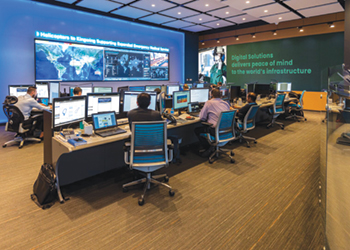
 Qayyum ... leveraging technology
Qayyum ... leveraging technology
Chemical tracer systems technology aims to digitise the wellbore to enable zone-specific well event processing, exception-based well surveillance and continuous monitoring for optimised production, Sajid Qayyum RESMAN’S VP for Middle East, tells OGN
The aim of digitalisation in the oil industry is to digitise all elements of oil production and the full export value chain.
Accordingly, the elements of the well, facilities, compressors, pipelines, terminals, etc, should ideally become digitised and relevant data values fed into an integrated asset model in real-time to enable exception-based asset surveillance and to support critical operational decisions.
Part of digitalisation are permanently installed chemical tracer systems, which represent a non-invasive and non-electric type of technology to provide zonal resolution and hence digitising of the full wellbore. The technology enables trend analysis to identify changes in oil/water/gas inflow and skin in each zone of the well to support operational decision-making to optimise production at different time scales as will be explained in greater details below.
In an exclusive interview with Abdulaziz Khattak of OGN, Sajid Qayyum RESMAN’S Vice-President for Middle East, offers an insight into how chemical tracer systems work and the economic benefits they bring.
Why is digitalisation becoming the focus of oil industry companies? How will RESMAN serve them?
Digitalisation is gaining increasing attention and focus among oil industry companies and is at the heart of RESMAN’S development strategy. RESMAN tracer data’s seamless integration with production, geomodelling and reservoir simulation software environments for well and reservoir surveillance is now a reality. This integration unlocks the full potential of our technology, in understanding the underground flow patterns, improving history matching and unlocking EOR (enhanced oil recovery) potential.
Explain briefly how tracer technology can improve oil recovery?
 |
RESMAN offers the largest and most advanced portfolio of |
RESMAN provides the largest and most advanced portfolio of tracer technology services in the industry today and thus provide many different monitoring possibilities. We offer permanent inflow monitoring solutions to identify where water is breaking through or to quantify how much is being produced from each zone.
We can estimate residual oil saturation around the near-wellbore region. RESMAN can enable our clients to achieve a full understanding of reservoir flow patterns. This involves supplying in-well and intra-well tracers for all phases — oil, water and gas. Some key questions that need answers include, ‘Where is the production coming from?’ ‘How efficient is the reservoir sweep?’ and, ‘How can I optimise my production?
The foundation of the technology is that unique chemical tracers are embedded in a polymetric matrix in form of plastic rods and installed in appropriate completion components such as a sand screen, ICD screen, pump joint, etc in specific zones of the well.
There are three types of tracers; water, oil and gas that are released from the polymeric matrix when in contact with water, oil and gas, respectively. The tracers remain dormant until the polymeric rods are wetted by the target substance. They are then transformed from the specific zone in the well-stream to topside in ultralow (part-per-trillion; ppt) concentrations.
Drilling a well to targeted depth brings with it challenges. What are some of those challenges and how can digitising vis-a-vis chemical tracers help overcome them?
RESMAN tracer services provide an understanding of flow in the wellbore, around the near-wellbore and between wells. The tracer interpretations provided will give a better understanding of well and reservoir performance. For example, know where water breakthrough is occurring in your wells, knowing which producer and injectors pairs are connected and knowing where your geological boundaries will support infill well drilling and well placement decisions.
Does the use of chemical tracers offer any advantages in frac applications?
Absolutely! Pumpable frac tracers are often used in unconventional reservoirs to verify clean up, frac efficiency and estimate flow contributions but their limitations is longevity where they may be detected up to a few months at the most. Alternatively, permanent inflow tracers can be installed which can provide many years of risk free monitoring.
What is the science behind the long life of tracer systems?
This is a very sophisticated science. Diffusion is the release mechanism of tracer compound, whereby the polymer itself stays intact. The release is dependent on exposure to and by physical contact with the target fluid, that is, oil, water or gas, and the individual tracer properties.
We tailor the polymer matrix material to release optimally based on well and reservoir conditions.
From the knowledge of the release mechanisms and the factors influencing it, it is an area where RESMAN spends significant amount of time performing experiments and enhancing longevity models to design the optimum inflow tracer system for a wide range of well and reservoir conditions.
It’s important to mention that water tracer systems currently have a five-year lifespan and oil tracer systems up to eight. This means continuous monitoring can take place from first time of wetting by the target fluid and up to five to eight years of the well life. Longevity is crucial for enabling relevant and high-quality decision support.
Can you discuss a case in point in the Middle East where your tracer technology has help ed an operator to optimise production?
RESMAN has monitored over 800 production wells globally to date. Primarily installed in new wells, in a plethora of open-hole completions and cemented-liner completions, tracer technology can function under harsh conditions such as HPHT (High-Pressure, High-Temperature) and even acidising stimulation.
In the Middle East, RESMAN is technically qualified with all the key operators. In 2020, RESMAN saw the highest rate of adoption yet in the Middle East. It took many years to educate and then adopt tracer solutions in the national oil companies as an economic and risk-free method surveillance to complement other monitoring technologies on the market.
RESMAN has provided many interpretations to optimise production, such as identifying which zones were producing water, where the operator shut off the offending zones and saw the water cut reduce by 90 per cent. It has helped understand which areas of the field are better swept than others and thus identifying infill well locations in the less swept zones.
Furthermore, plotting data and correlating data is a very powerful analytic and visual technique where human (and potentially artificial) cognition and algorithms can be used and potentially trained to recognise patterns and relates these to changes in zone-specific well behaviour.
Often this involves changes in slopes and data anomalies. And so, by correlating changes in production data with changes in tracer concentrations (ng/ml) and tracer fluxes (mg/day) changes in zone-specific behaviours can be deciphered and identified. Such co-trend analysis, diagnostic plotting and pattern recognition represent the foundation of continuous monitoring of the well at zonal resolution.
By providing zonal resolution permanently installed, chemical tracers digitise very important elements of the oil field asset – the productive and unproductive zones of the wellbore. This element is important to digitise in a digital oilfield model as the zones are typically around the perforations that represent the fundamental physical connection between the hydrocarbon-bearing reservoir and the pathway by which the oil flow to surface.











































































